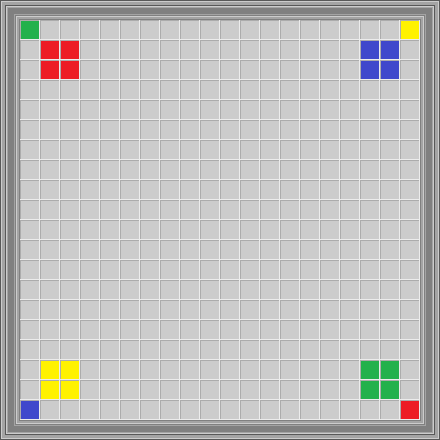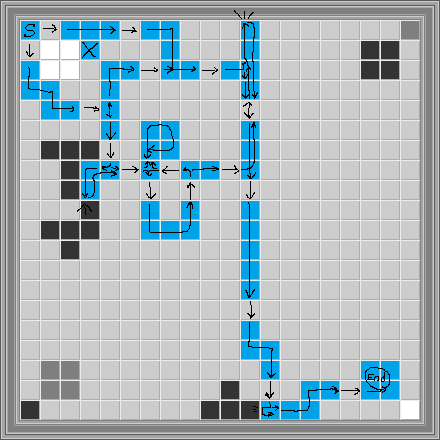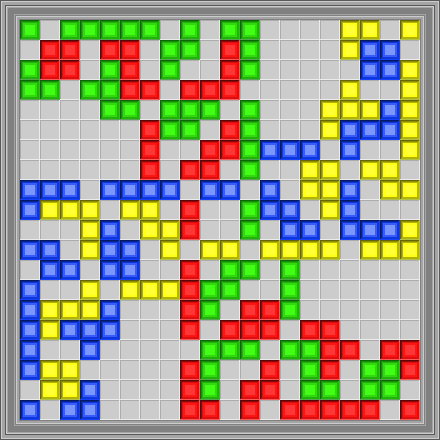When I'm fed up with the usual rules of the board game Blokus, I'm making variations of it.
Here is one I recently come up with.
Provided on a Blokus board, each player has at his disposal every unique polyomino composed from 1 to 5 squares :
- 1 dot
- 1 domino : the 2-line
- 2 trominoes : a 3-line, and a small v
- 5 tetrominoes : S/Z, L/J, T, O (2x2 square), I (4-line)
- 12 pentominoes : See the wiki for naming conventions
The board is of size $(20*20)$.
The starting position in the board is the following: each player has his monomino (dot piece) already placed on the corners of the board, and their 2x2 square is placed on the other side of the board, touching the dot by the corner.
Starting position: 1..................2 .33..............44. .33..............44. .................... .................... .................... .................... .................... .................... .................... .................... .................... .................... .................... .................... .................... .................... .22..............11. .22..............11. 4..................3
Starting position as a picture:
Now, here are the rules.
- To succeed, a player must redirect the flow from his dot, to his goal, the 2x2 square.
- The flow starts by leaking out of the 2 sides of the dot, it can't be obstructed, and the flow cannot go back in the dot.
- The flow have to jump over one unused tile to reach another placed piece of the same color.
- Every couple of pieces of the same color mustn't touch by the edges (corners are allowed)
- Inside a piece, the flow tries to go forward. If it can, then it moves forward
- If it can't go forward, it will look to the left and the right. and will turn towards an "own color" square.
- If the flow can go both directions, it will split (with one exception).
- If no "own color" square has been seen, it tries to exit the piece and initiate a jump forward. If the tile forward is taken by another color, or it hits a border of the board, the flow makes a 180° turn. (a detailed example will follow)
- if the flow is currently in a jump tile and it doesn't land on a piece of its color the next tile forward, the flow is lost. and if it jumps and lands on a wall, it's lost too.
- flow of different colors can jump over the same unused tile.
- (that one exception) when entering a "P" pentomino, all of the entering flow get out of the tip of the 'P'. (it doesn't get indefinitely stuck)
- After landing on a new piece, if the flow can't go forward on the next step, it will split to the left and right, even if there are no blocks to be seen.
Here is an example of how one player can reach his goal, using the above rules.
In the above picture, there is a square (marked with an X) where no flow is passing by, this counts as waste. Also, when some landing split occur, I can use the others colors to redirect back the flow, even if it would make more waste.
What you have to do: find a situation where all 4 players redirect all of their flow to their own goal.
Answer with the least amount of waste squares wins.



